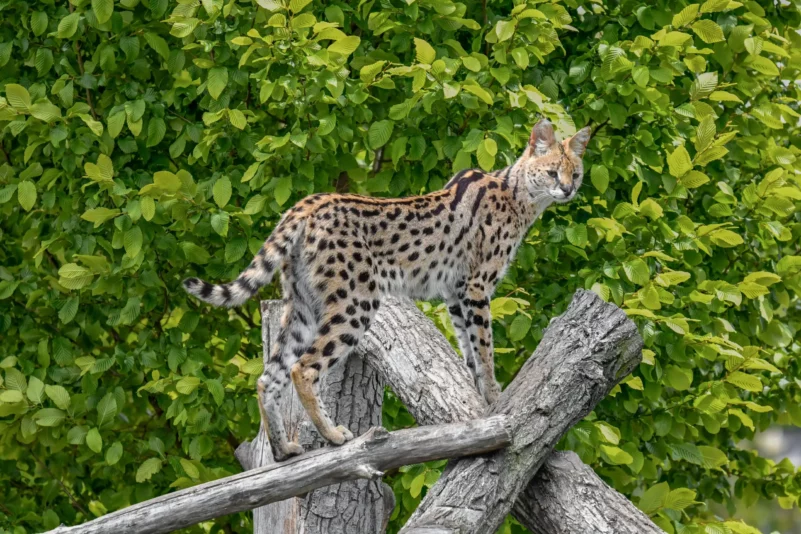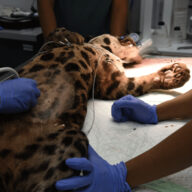
Serval
Leptailurus serval
Serval
APPEARANCE
Serval’s coat is light yellow, yellow-brown or fawn with black spots. On the neck and shoulders the spots often merge into stripes. The underside of the body is whitish-yellow and spotless. With its slender and long legs and elongated neck, the serval is well adapted to hunting small prey in long grass. Its hind legs are longer than its front legs. It has agile paws and strong curved claws that are used to grasp mice and rats. The serval’s head is small and delicate. Its ears are very large, set high and close together. The back of the ear is black with a distinct horizontal white stripe. The tail of the serval is relatively short.
DISTRIBUTION AND HABITAT
The serval is found in 34 African countries. It inhabits sub-Saharan Africa except in tropical forests and deserts.
It inhabits a variety of grasslands such as reedbeds, swamps, grass savannas or wetlands, and forests. It prefers rather moist habitats and is often found along rivers.
BEHAVIOUR
The serval is a territorial loner. It is active mainly at dusk and at night, resting during the day. During the wet season, the serval also hunts during the day. Increased daytime activity is also observed in females with young.
FOOD
The main prey of the serval is small mammals, especially rodents and rats. It also preys on mice, birds, lizards and snakes, frogs, fish and insects.
MAIN THREATS
The main threat to the serval is the loss and degradation of wetland habitats caused mainly by increasing urbanisation and changes in land use. Such wetlands have high rodent densities compared to others and are the main habitat areas for the serval.





